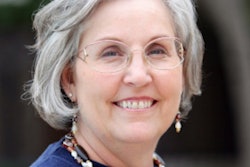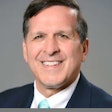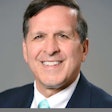
You understand intuitively that the patients in your practice, and the population in general, are aging. The problem many dentists face is not knowing what practical steps can be taken to help these patients. Leonard Brennan, DMD, a pioneer in treating aging patients, urges a focus on interdisciplinary approaches and patient communication to aid these patients and your practice.
Many healthcare practitioners of all specialties -- and even patients -- believe that oral disease is just an unfortunate part of getting older. But this is nothing more than a myth to be debunked, according to Dr. Brennan.
"Seniors need a model of care where they afford and receive care," he said in a presentation at the recent 2017 ADA annual meeting in Atlanta.
Dr. Brennan practices in Portland, ME. He is a member of the ADA's National Eldercare Advisory Committee and also co-director of the geriatric dentistry fellowship at Harvard University in Cambridge, MA.
Interdisciplinary teams
Dr. Brennan brought up the common condition of older adult patients having xerostomia, or persistent dry mouth. More than 400 pharmaceuticals can cause dry mouth in these patients, which means interdisciplinary communication is crucial to find solutions, he said.
"There needs to be communication across the dental-medical silos to find solutions that allow these patients to not have dry mouths and to be able to eat and taste their food," he told the audience.
Dr. Brennan recounted many times when he's talked with physicians who had no idea what effects the drugs they prescribed had on their patient's oral healthcare.
"Don't misunderstand me, those drugs have a role to play," he said. "But all of us in healthcare need to be thinking about polypharmacy issues."
Dr. Brennan said that what his older adults patients are most interested in is being able to eat, taste food, and smile. Eating and tasting food are separate issues, he noted.
"The senses of smell and taste are correlated," he said. "After age 60, we all have a reduced ability to taste sugar and salt."
Whether the patient lives in the community or a long-term care facility, communication between healthcare professionals is crucial to help patients eat and taste their food. Often, this reduced ability to taste sugar and salt means these adults add more of these substances into the food they eat, he said.
Dr. Brennan gave the example of observing a patient he knew who previously had added one spoonful of sugar to her coffee now was adding four or five spoonfuls.
"This behavior directly affects what we do as dentists when we are treating these patients," he told the audience.
Communication tips
One of the advantages of treating older patients is their compliance, according to Dr. Brennan. As long as your communication is good and they can hear, these patients are happy to please you, he noted.
“How we communicate is what changes their life.”
"Seniors are conscientious. If you give them instructions on what to do, they will do it," he said. "How we communicate is what changes their life."
Dr. Brennan cautioned, however, that your practice can't expect to treat older patients on the same schedule as younger patients. Dental teams need to take the time to properly communicate with these patients.
"Our problem often is that we are working on a schedule and don't take time to properly instruct these patients," he said.
Dr. Brennan offered several recommendations for communicating with these patients:
- Avoid terms of endearment.
- Structure and organize your message.
- Do not present too much information at one time.
- Listen.
- Keep your face well lit and face the patient as you speak.
- Speak slowly.
- Ask open-ended questions.
Oral care for seniors
Another myth Dr. Brennan was quick to bust concerned the issue of oral care in long-term living environments.
He said he was talking with a staff member at a long-term facility when he relayed that it seemed as if the staff did not put much time into cleaning their patients' teeth.
"And I was told quickly that it was a myth that caregivers don't want to clean their patients' teeth," Dr. Brennan said.
The issue at these facilities, he said, is not willingness to care for the patients but rather staff turnover.
"Turnover at these facilities can be high," Dr. Brennan said. "We can train staff, but it's difficult to train everyone if people leave all the time."



















